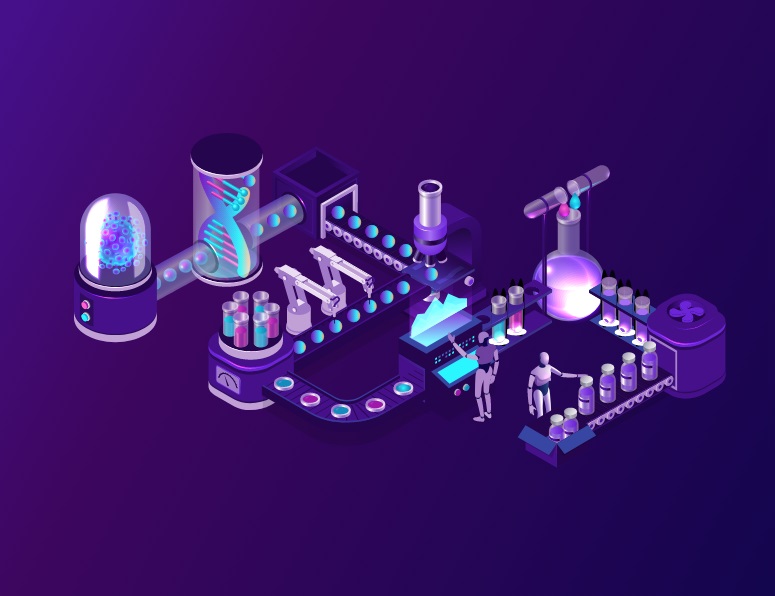Have you ever thought about how your email inbox is so smart that it can filter spam, tag emails or important conversations and segregate promotional, social and primary messages? In this post, we will explain how Machine Learning algorithms work and how we can take advantage of them for the benefit of companies.
There is a complex algorithm for this type of prediction and this algorithm is within the broad spectrum of Machine Learning or machine learning. What the algorithm does is an analysis of the words in the subject line, the links included in the email, and the patterns in the recipient list. First, let’s define what exactly Machine Learning (ML) is:
What is Machine Learning?
Very concisely, Machine Learning has to do with understanding, mostly, hidden data and statistics, and then extracting significant information from this raw data set. The analytical method that algorithms use can help solve complicated data-rich business problems.
Besides, machine learning models are quite adaptable, as they continue to learn as new data is introduced. This means that the longer they operate, it makes them increasingly accurate in their predictions.
Concerning companies, Machine Learning algorithms that are driven by new computer technologies can help improve business scalability and improve business operations. This is achieved by combining both artificial intelligence and business analysis, this is how machine learning can be a solution for a variety of business complexities. Today, ML models are used to predict everything from spikes in web traffic, hardware failures, traffic patterns, disease outbreaks, to actions and products.
The Importance of Algorithms
Machine Learning uses a process where the computer algorithm finds a pattern in the data and predicts the likely results. Machine learning patterns are very adaptable in the way they are constantly updated when new data is introduced.
As we mentioned this aspect makes them more and more precise in their predictions the longer they operate. On the other hand, in business terms, the machine learning algorithm integrated with advanced computing technologies such as artificial intelligence and business analysis can be a response to a variety of business complexities. It can also help improve business operations and expansions.
A large number of machine learning algorithms have received remarkable recognition in the business analysis community. There has been a great boom in machine learning, due to the increase in volumes, easy access to data, economic computational processing, and reasonable data storage. Therefore, organizations can benefit from learning and apply machine learning technology in their business processes.
Natural Language Processing (NLP)
Machine Learning systems are increasingly advanced, so they can understand the language with which we interact among humans and can respond in our language. This is called Natural Language Processing.
Some of the Applications of the PLN are:
- Automatic text translation
- Sentiment analysis
- PLN to improve conversational systems
- Making summaries automatically with PLN
- The PLN saves time and speeds up the work by automating processes that are carried out by hand, allowing us to make decisions more easily.
Data Mining
Tools Data Mining ( Data Mining ) explore within large databases, automatically or semi-automatically, intending to find repeating patterns, trends or rules that help us explain the behavior of the same data in a given context.
What can data mining be used for? The most prominent applications in the business world are the following:
- Design of strategies based on specific information
- Know better the habits, customs, and preferences of the users
- Facilitate the search for relevant information
- Predict consumer behavior
- Detect customer abandonment risk
- Thanks to modern systems that use data mining, we streamline the tasks of our companies to be more efficient.
Artificial Vision
The Artificial Vision (Computer Vision), scientific discipline, is concerned with developing artificial systems that obtain information from multidimensional data. That is, the Artificial Vision includes processes to acquire, process, analyze and understand images of the world in real that we live to produce numerical or symbolic information that can be treated by a computer.
Some of the best-known applications of Artificial Vision in the business world:
- Product counting
- Positioning
- Rotation control.
- Pick and place
Artificial vision helps achieve strategic objectives in terms of product quality improvement, higher productivity, and reduced production costs. The data that is collected on the defects of the pieces offer the opportunity to identify and solve the problems of the production line.
Robotics
The term “Robotics” is usually incorporated into Artificial Intelligence, but not all robots are “Intelligent.” Robots are machines that do a job for themselves, following a set of rules programmed by a computer. Currently, AI and Machine Learning are applied in a limited way to improve the capabilities of industrial robotic systems.
Supply chains and companies specialized in logistics applications are among the first to implement Artificial Intelligence and machine learning in their robotics tools. Robots are also used in medicine and education, both in operating rooms and in classrooms.
With the help of machine learning, organizations can extract a huge amount of meaningful information using raw data. If executed properly, machine learning can serve as a key to several business problems and predict complex customer behaviors. Some of the ways in which machine learning can benefit your business are the following:
Benefits of Machine Learning for Business
1. Preferred Customer Behavior
Machine learning is being used by companies around the world to predict customer behavior and cover-up predictive information in prescriptive information to increase the customer base or offer them better services. By observing purchasing patterns and browsing through purchase histories, retail companies can offer the best-personalized product or service to individual customers and improve demand forecasts. This brings us to the next point.
2. Product Recommendations
In electronic commerce, ML algorithms can be used to motivate the purchase of the product. When combined with a large inventory of products, machine learning can be used to identify hidden patterns and group similar things. These products can be suggested to customers.
3. Improve the Marketing Strategy
ML can generate a large amount of data in real-time to make it more relevant and useful. The data received from the analysis of customer behavior can be used to make appropriate changes in a company’s marketing and sales strategy, including additional sales and cross-selling. ML models equipped with image recognition software at retail companies can be extended to customers so they can find the right product in a scanned inventory of thousands of products. Also, sales can be achieved through the implementation of the recommendation engine and targeted advertising in real-time can also be generated on websites.
4. Assistance for Data Entry
Predictive modeling and machine learning algorithms can help simplify a company’s documentation process, eliminating the risks associated with manual data entry. The formula can be used to automate the data entry process and finally, allow specialized resources to focus on important and creative tasks.
5. Financial Analysis
Fraud detection proves to be a major obstacle in today’s financial sector. Companies involve a huge team of experts to find fraud in your company and its process is not only expensive but also time-consuming. ML can help not only to find but also to predict fraud in a large volume of transactions by applying cognitive computing technologies to raw data. In the monetary portfolio, ML can also help in risk management, investment predictions, improve customer service and deploy digital assistants, loan management and security measures, among other things.
6. Prediction and Medical Treatment
The health sector is like the goldmine of data and more when the data improves the machine learning model. If applied well in the pharmaceutical and pharmaceutical sector, it could lead to better diagnosis of diseases, a personalized treatment, greater efficiency of research and clinical trials, intelligent health records, outbreak prediction, and better control measures.
7. Detect Network Intrusions
Moreover, when predicting complex customer behaviors, data mining can also be used to predict patterns in network intrusions, and consequently eliminate them. An intruder detection system filters network traffic while searching for any malicious activity in the form of an attack or unauthorized access. Analysis of this traffic can make employers better equipped in the future to control intrusions. Since they will be based on the analysis, these detections will be more accurate and faster.
8. Eliminates Manual Data Entry
Plagiarized and incorrect data are one of the biggest problems facing organizations today. By incorporating machine learning, companies can significantly avoid any errors caused by manual data entry. Machine Learning technology performs these processes using the discovered data. Therefore, organizations can save time and labor and use it to improve the business.
9. Spam Detection
Machine learning has helped organizations detect spam for quite some time. The use of the ML organization can stop malware attacks or phishing schemes, which access and interrupt the recipient’s computer system by collecting confidential information. Previously, email service providers used pre-existing rule-based techniques to filter spam. However, with ML spam filters learn and create new rules to detect phishing messages from authentic messages
10. Image Recognition
Image recognition refers to technology that identifies individuals, locations, logos, etc. By using ML, it collects and processes high-dimensional data from around the world in numerical and symbolic information. It involves data extraction, pattern recognition and the discovery of database knowledge. ML-enabled image recognition technology is used by various industries such as security, electronic commerce, automotive, games, etc.
As we can see, the potential of Machine Learning is enormous, not only to improve the user experience but also to facilitate tasks, reduce time, costs and resources. Do you have any idea of processes that you can automate in your business? Do not hesitate to contact us, we can surely help you land some ideas.



